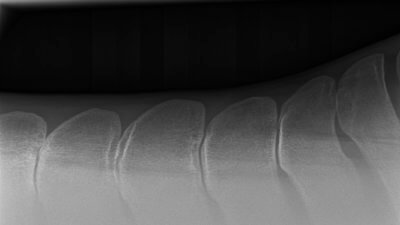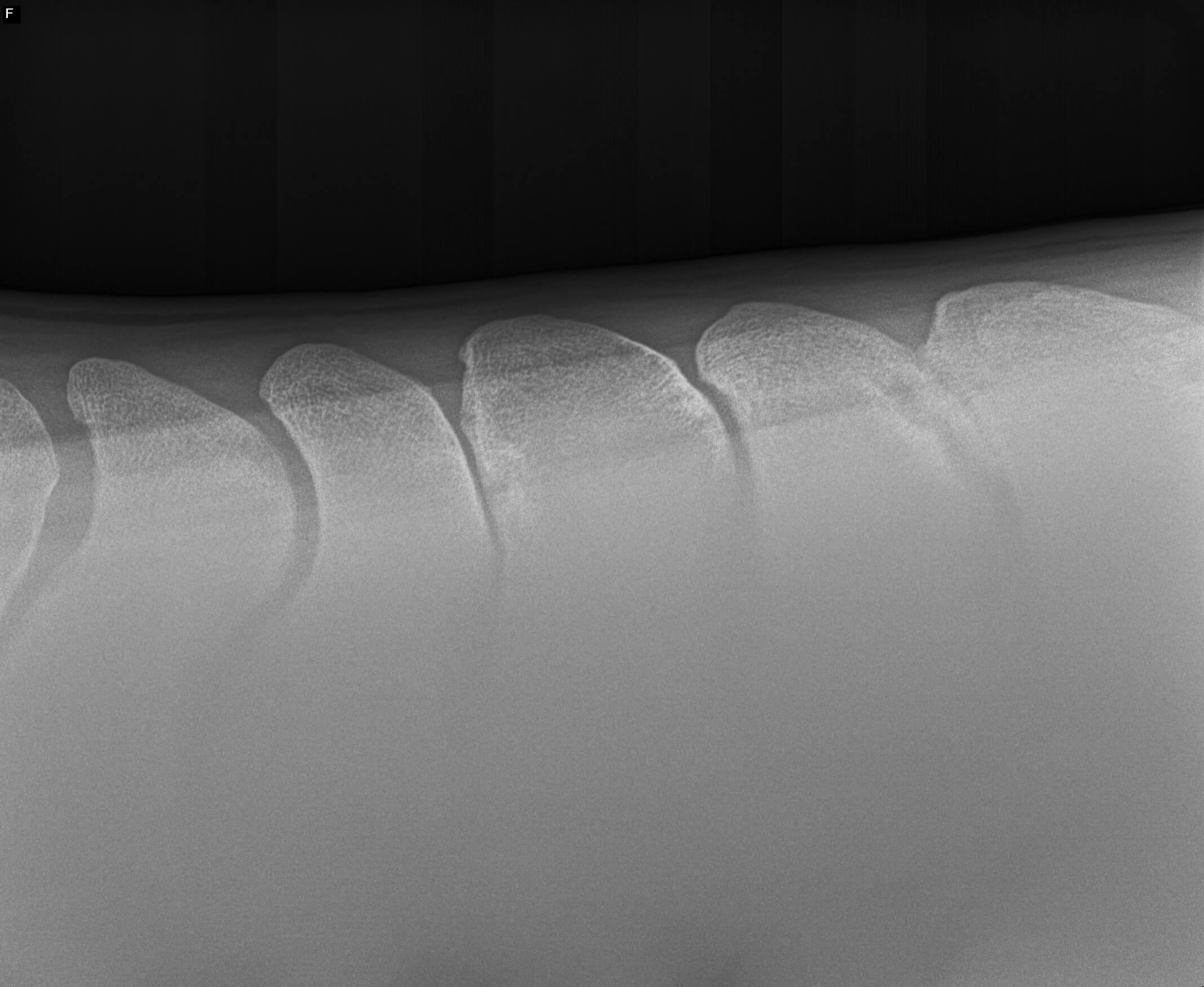It sometimes begins with a horse that becomes anxious under saddle, has unexplained spooking and bucking when ridden, refuses to go forward, and has an inability to make progress in training. Or maybe they just resist being mounted and are cold backed but then work out of it. Perhaps the problem is that the horse has on-again, off-again lameness that can’t be explained.
 These problems might send the horse’s rider to their veterinarian looking for physical reasons to explain this behavior. With today’s excellent imaging abilities, horses with poor performance are often diagnosed with kissing spines, which is a situation where two or more of the horse’s spinous processes are positioned so that they touch or rub against each other. Hence the term “kissing” spines.
These problems might send the horse’s rider to their veterinarian looking for physical reasons to explain this behavior. With today’s excellent imaging abilities, horses with poor performance are often diagnosed with kissing spines, which is a situation where two or more of the horse’s spinous processes are positioned so that they touch or rub against each other. Hence the term “kissing” spines.
Dr. Tracy Turner published a study on kissing spines where he shared observations after looking at 212 cases. Here is a summary, in my own words, of interesting points we should keep in mind when dealing with kissing spines.
- Kissing spines are diagnosed by the appearance of the horse’s back on x-ray. We then try to correlate what we see there with the symptoms the horse is showing.
- 39% of the horse population show kissing spines on X-ray but have no problems associated with it.
- Kissing spines are much more common in horses that show signs of back pain.
- Horses most likely to show signs that they do have kissing spines are thoroughbreds and dressage horses, horses that are young (five years or less), and horses with five or more vertebrae affected.
- Horses five years or younger and horses with five or more vertebrae involved were significantly harder to treat.
- The most common signs in the horses presented in the study included hard to get on the bit, hollow in their backs when ridden, behind the leg, slow to warm up, and back sore to touch.
- Thermography, a test that uses an infrared camera to detect heat patterns and blood flow in the horse’s body tissues, is useful in evaluating the significance of kissing spines.
- The importance of saddle fit: 29 horses had their saddles re-fitted and this was helpful 71% of the time.
- Treatment is multifactorial and should start with an appropriate prescribed daily exercise regime and proper saddle fit. Various injections and shockwave have been shown to help along with surgery in some cases.
See this article in the 2021 January online edition:

Dr. Sara Perkins, DVM, graduated from the veterinary school at Washington State University in 2000 and completed an internship at Rood and Riddle in Lexington, Kentucky in 2001. After working with the equine internal medicine department at UC Davis in 2002 she went into private practice, opening Equine Medical Services of Rainier, WA in 2005. Sara partnered with EquinaVet in Germany in 2017 in order to make their nutritional supplements available to horses in the USA. Currently, Sara divides her time between veterinary practice, working for EquinaVet USA, riding dressage and cutting horses, and managing Waystation Farm where she breeds Lusitano horses. Visit www.equinemedservices.com to learn more.






